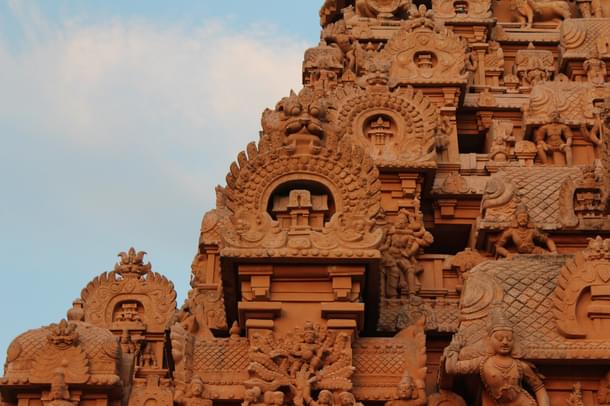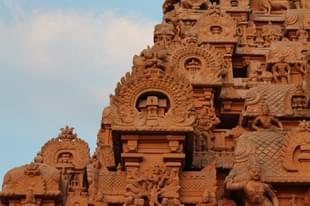Culture
Temple Administration: Minimising Government Presence through Empowered Local Trusts
Aravindan Neelakandan
Nov 13, 2024, 01:53 PM | Updated 02:07 PM IST
Save & read from anywhere!
Bookmark stories for easy access on any device or the Swarajya app.


Since the dawn of colonialism and modern times, Hindu temples and temple-related administrations have become the focal points of conflicts, contentions and controversies.
Through the millennia, Hindu temples have evolved for the partaking of sacredness of the Vedic Yajna transmuted by Bhakti and fortified by Tantric and Agamic rituals. They are supported by the rulers and society. In turn they support the rulers and the society. They are the wellsprings of spiritual democracy and theodiversity. They are sacred spaces which are both inviolable and which constantly evolve. Thus, Hindu temples are a unique phenomenon in human civilisation.
As they stand today, they are endangered and they need to be revitalised and reclaimed by Hindu society. They have to become the continuation of their ancient inception adapted to the challenges of modern era. The ability to adapt are involuted in the DNA of the Hindu temples.
Colonialism saw the temples as a necessary evil. Necessary because the rulers should not antagonise the ruled. 1857 was a grim reminder to that fact. Evil because they were seen as centres of priest-craft and exploitation of the gullible. The latter was a view driven by monopolistic arrogance coupled with Protestant ignorance and aversion towards the Pagan civilisation.
In post-independent India, in Tamil Nadu, the Dravidian movement saw the temples in the same way the colonialists saw. Their ultimate aim was to transform them into museums and in the meanwhile they would run the temples through the Hindu Religious and Charities Endowment Board (HR & CE). Naturally the temples were systematically starved in their inner being while periodic cosmetic changes were done, including elaborate Kumbhabishekams etc. But there was never a systematic effort to increase the temple bonds with the Hindu communities around.
Temples being part of the society have accumulated on themselves the impacts of social stagnation and ravages of history. Untouchability, a phenomenon that is the anti-thesis of spiritual democracy, which is the core of Sanatana Dharma, was made part and parcel of temple entry protocols. When this was challenged by progressive elements in the society, the social stagnationists masquerading as ‘Sanatanists’, opposed the entry of Scheduled Communities (SC) into the temples tooth and nail.
Here one should note that those who called for the temple entry for all Hindus, were not ones who had decided Sanatana Dharma was something to be eradicated but that they called for the temple entry of all Hindus because that was in the true spirit of Sanatana Dharma.
Today however the narrative has become more embittered and confused. There are allegations of rampant corruption and mismanagement of temples by HR&CE and there are movements to ‘liberate’ temples from government control. At the same time, on a regular basis, the Hindus of Scheduled Community (SC) are stopped from entering temples, mainly in rural areas. These are mostly community-owned temples.
If Hindu temples move out of government administration, which in turn should obey the constitutional values, then where is the guarantee that the temples would not once again revert back to practicing untouchability? Already one hears justification of untouchability and discrimination against the birth-based Shudra castes in the sacred space through utterly pseudo-scientific theories of ‘forms of energies’ and ‘vibrations’ etc. Such voices are promoted in the ‘temple-liberation’ circles – not in all but many. Scratch a ‘temple liberation’ activist and the possibility is that most of the time one will find a person with a pro-caste worldview. Scratch further and you might find even a supporter of untouchability.
Another point of contention is making all Hindus the temple priests.
This agenda has been taken pro-actively by the Dravidianist movement, particularly the Dravida Munnetra Kazahagam (DMK) the present ruling party of Tamil Nadu. The agenda comes with a package. They want to replace Sanskrit with Tamil as the ritual language in the sanctum sanctorum of the temple. The agenda comes from the worldview of animosity towards Sanskrit and an anti-Brahmin sentiment that had been systematically cultivated by the missionaries and colonialists. Floating various pseudo-histories that vilify the Brahmins as ‘cunning Aryan outsiders’ the Dravidianist movement aims at eliminating the Brahmins from the temples. If one scratches a Dravidianist, one would find a Brahmin-phobe and if one scratches further there is every possibility of discovering a crypto-Christian.
Genuine Hindus who want the revitalising of the temples in Tamil Nadu, are thus caught between the stagnationists Scylla and Dravidianist Charybdis.
At the heart of this problem is the problem of dwindling priests. With insistence of blood-line and clan-based priesthood and increasing career pressures of the modern society, more intelligent members of any community would opt for careers which are prestigious and economically lucrative. This is the democratising tendency of modern society. It democratises all the professions.
We no more look for Kshatriya clan/castes recruitment in military. Interestingly the British tried to cling to an equivalent purely pseudo-scientific and entirely European 'martial races' theory. We no more look for Shudra-clan/castes recruitment in agricultural colleges. We no more look for Vaisya-clan/castes recruitment in banking sector. However, birth-based traditional reservations continue to exist with the Scheduled Communities and Brahmin Jatis. A society is only as strong as its weakest links and in the extraordinary situation of Hindu society under siege – the traditional birth-based reservations have become the most dangerous weak points in the Hindu social being.
Temples still harbour the spiritual strength to change this. The Hindu temples should be under Government management with a supervisory board of seers and community elders. Every temple should have an advisory committee in which the sampradaya seer should have legal powers. This seer as also the temple priests should have passed All India Hindu Dharmacharya Service/All India Hindu Purohit Service and/or All India Hindu Archaka service examinations.
The syllabus for such service examinations should have a rigorous curriculum that includes the general Sanatana Dharma knowledge, specific sampradaya knowledge and then a curriculum that involves fundamental principles of modern science and cosmology. Thus, the certified Dharmacharyas alone could become Jeeyars or Shankaracharyas or Adeenams irrespective of their castes. But they should adhere to the life prescribed by the Shastras for such a Dharmacharya of a Peetham.
If that is done then we as Hindus will not have to suffer pontificates who make statements that inter-caste marriages are similar to marriage between animals and humans. If one remembers that the statement was made by one of the Shankaracharyas and other Shankaracharyas remained tactfully silent, then one would understand the rot we are in and why we are ethically unfit to ask for temple liberation.
Those who become priests should also qualify themselves through the tests. The tests should be strictly for Hindus.
With such a streamlined system in place with all communities of any place having a say in the rights of the temple and management of temple as well as its properties, the government hand in the temple administration can be minimised and such an empowered temple committees can effect following advantages to Hindu society:
Anti-Hindu forces posturing as progressive with respect to temple reforms can be check-mated:
Dharmacharyas and priests become respected members of the society capable of removing social conflicts
Temples rejuvenated for the spiritual evolution of humanity.
More importantly and urgently, temples will also become networks for Hindu Sangathan.




